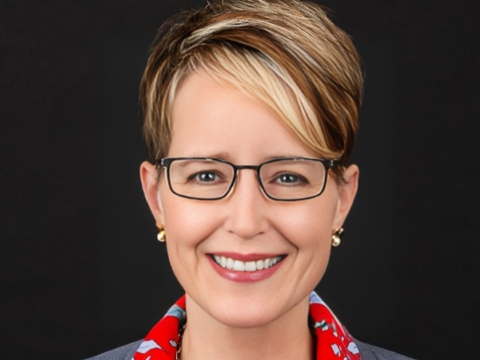
Susanna Greer: Opening the door to new treatments for cancer patients
Susanna Greer, Chief Scientific Officer at The V Foundation for Cancer Research, shared on LinkedIn:
“This week’s Cool Cancer Find is about the BRCA2 gene and comes from the lab of the V Foundation the grantee Dr. Tony Huang at New York University.
To understand Dr. Huang’s study, imagine your body’s DNA as a set of intricate, detailed instructions for building and maintaining a healthy life. These instructions are copied millions of times as cells divide and grow. BRCA2 is a diligent proofreader ensuring these copies are error-free. When BRCA2 malfunctions, errors happen, potentially leading to cancer.
Dr. Huang’s study focuses on BRCA2’s role in preventing a specific type of cancer that happens when the cell reads and copies DNA simultaneously. It’s like to trying to read a book while someone else is writing in it, but they are going in the opposite direction, something researchers call a “head-on transcription-replication conflict” or HO-TRC. These HO-TRCs create total chaos in cells, making it hard to read or write without errors.
Dr. Huang and his team investigated this phenomenon by examining specific places on the DNA where copying starts, similar to mapping doors in a building used for entering and exiting. They found that under stress, cells activate additional, backup entry points called “dormant origins” to keep up with the copying process.
However, these dormant origins can cause HO-TRCs when they are too close to the busy DNA regions being actively read. In healthy cells, BRCA2 helps manage this by recruiting another protein, RNase H2, which clears the roadblocks and smooths out the reading and writing process; imagine RNase H2 as a cleaner who tidies up messes from what are basically head-on collisions.
The Huang lab used cool imaging to actually visualize these conflicts in cells. They showed that when BRCA2 is missing or defective, the messes, known as R-loops, pile up, leading to more errors and DNA damage. This research has significant implications for cancer patients. Understanding how BRCA2 prevents this damage clarifies why its loss increases cancer risk, especially in ovarian and breast cancers. This knowledge aids in developing drugs that can mimic BRCA2’s role or help clear the mess caused by its absence.
Additionally, for individuals with BRCA2 mutations, this understanding could lead to preventive measures that lower their cancer risk. I love this study; it highlights the critical behind-the-scenes work of BRCA2, emphasizing the importance of basic research in uncovering cellular processes and paving the way for improved cancer treatments. Incredible work Dr. Huang!
Read Dr. Huang’s paper and follow his lab at Tony T. Huang.”
Source: Susanna Greer/LinkedIn
-
Challenging the Status Quo in Colorectal Cancer 2024
December 6-8, 2024
-
ESMO 2024 Congress
September 13-17, 2024
-
ASCO Annual Meeting
May 30 - June 4, 2024
-
Yvonne Award 2024
May 31, 2024
-
OncoThon 2024, Online
Feb. 15, 2024
-
Global Summit on War & Cancer 2023, Online
Dec. 14-16, 2023
